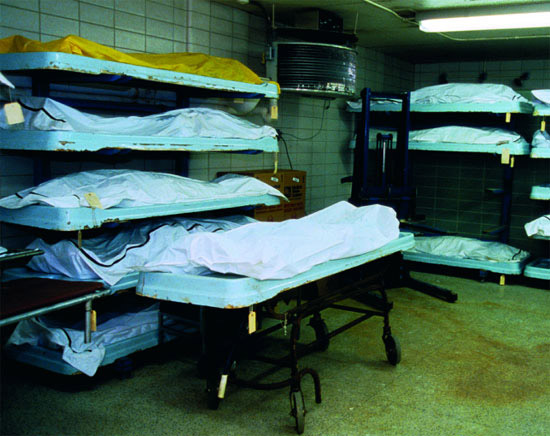
“In the A-B-C sequence chest compressions are often delayed while the responder opens the airway to give mouth-to-mouth breaths or retrieves a barrier device or other ventilation equipment. But in 2010, the AHA reordered the letters to CAB: chest compressions first, followed by airway opening and rescue breathing. The mnemonic initialism used to be ABC, which stood for airway, breathing, chest compressions: First you tilt the head back and lift the chin to open the airway, then you administer rescue breaths, and finally you start chest compressions. While mouth-to-mouth resuscitation is still taught in CPR training classes, there has been a slight change in the steps. Michael Sayre, an emergency medicine professor and the head of the AHA committee in charge of the policy shift, told NBC News at the time, “Something is better than nothing.” If there’s nobody around who can do conventional CPR to resuscitate someone after a near-drowning, for example, at least do hands-only CPR to keep their blood pumping until the ambulance gets there.

The announcement also listed situations in which mouth-to-mouth resuscitation was especially important-namely, any “asphyxia-precipitated cardiac arrest, such as those associated with drowning, trauma, airway obstruction, acute respiratory diseases and apnea,, pediatric arrests, and prolonged cardiac arrest.” In short, if you collapse because you aren’t getting enough oxygen, then you really need oxygen.īut as Dr. Any confident, trained bystander could choose hands-only or conventional CPR. According to the guidelines, hands-only CPR should be used “if a bystander is not trained in CPR” or “if the bystander was previously trained in CPR but is not confident in ability to provide conventional CPR” with both chest compressions and rescue breaths. Moreover, hands-only CPR focuses on the biggest priority for anyone suffering from cardiac arrest: keeping blood circulating to their brain and other vital organs.ĭespite what headlines suggested, the AHA wasn’t advising that everyone do away with mouth-to-mouth resuscitation in every scenario.
#CAB IN CPR STANDS FOR PROFESSIONAL#
Basically, you call 9-1-1, and then press on the victim’s chest at a rate of 100 to 120 presses per minute-roughly the tempo of the Bee Gees song “Stayin’ Alive,” as The Office so memorably taught us-until a professional can take over. The directions for hands-only CPR couldn’t be more straightforward. Not only are people reluctant to swap mouth germs with a stranger, but the two-factor process can be tough to remember even if you are trained you might hesitate to help because you’re worried about getting it wrong and doing more harm than good. The aim was partially to remove barriers that keep bystanders from performing CPR.

The AHA had been researching the efficacy of hands-only versus traditional CPR since the 1990s, and the results from three 2007 studies supported a pivot to hands-only.
#CAB IN CPR STANDS FOR UPDATE#
For those in the know, the update was a long time coming.

In 2008, the American Heart Association (AHA) revised its recommendations for bystanders who witness an adult collapse: They should skip mouth-to-mouth and instead opt for “hands-only CPR,” in which they continually administer chest compressions on the victim until emergency medical services arrive. So why the change-and when exactly is rescue breathing still necessary? What Is “Hands-Only CPR”? Over the last 15 years, however, CPR without mouth-to-mouth resuscitation has risen in popularity. For most of that history, mouth-to-mouth resuscitation-which involves tilting the person’s head back, pinching their nose, and breathing into their mouth-was an integral part of the process.

CPR, which stands for cardiopulmonary resuscitation, has saved countless lives since its inception in the 1960s.


 0 kommentar(er)
0 kommentar(er)
